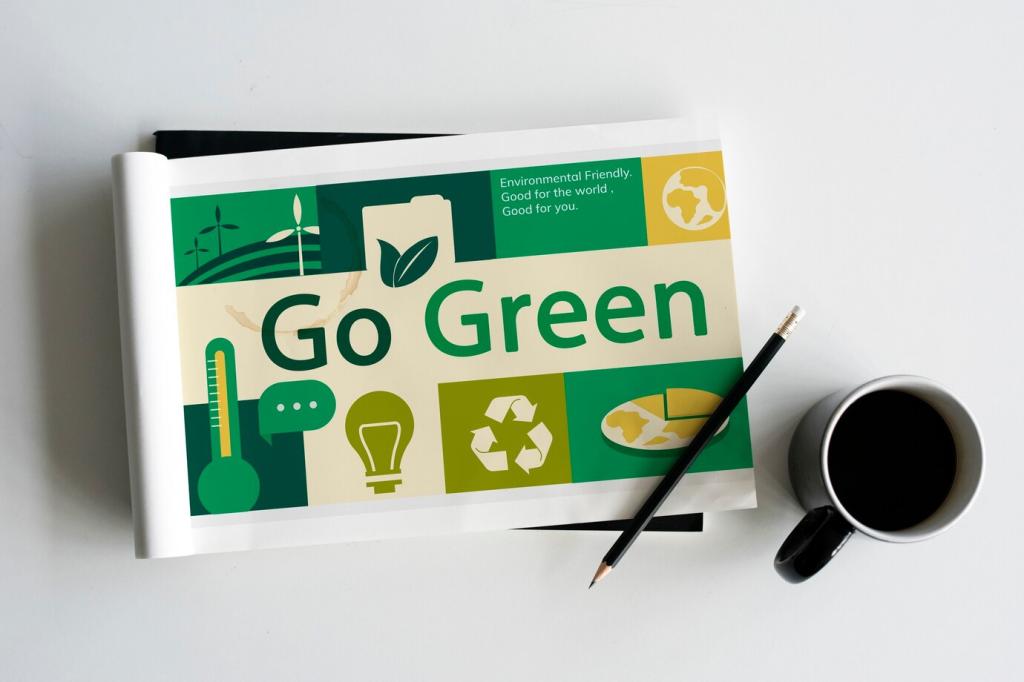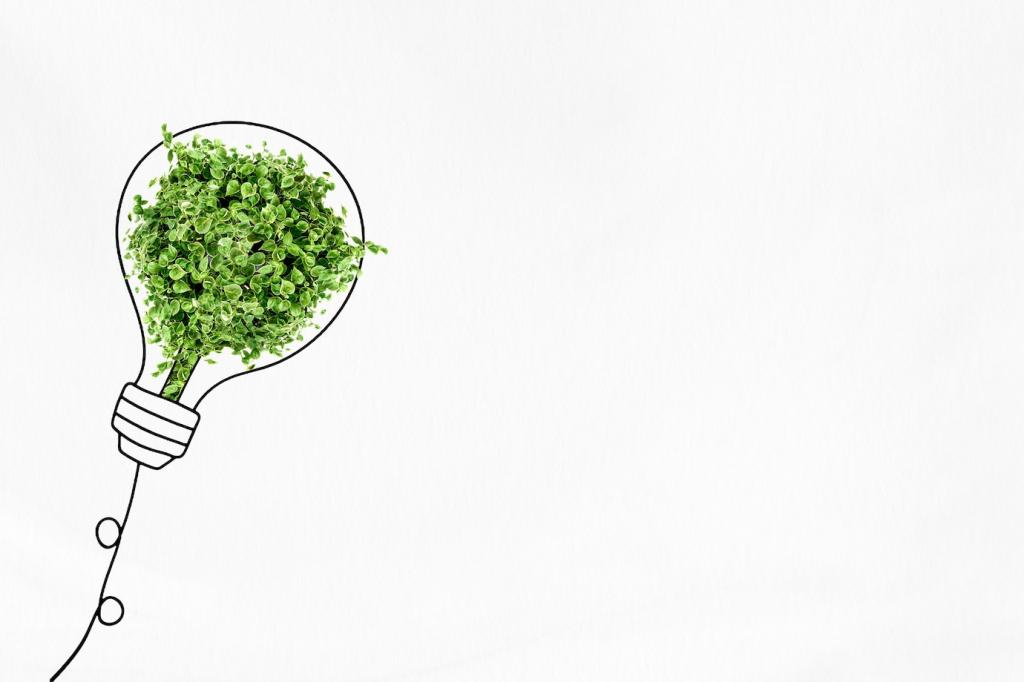Sustainable Fashion Trends and Innovations
Eco-Friendly Materials
01
Organic cotton and linen are revolutionizing the way basic fabrics are grown and processed. Unlike traditional cotton, organic cotton is cultivated without the use of synthetic pesticides or fertilizers, resulting in safer working conditions and less harm to the surrounding ecosystem. Linen, derived from the flax plant, is naturally pest-resistant and requires less water than many other crops. The use of these materials not only reduces pollution and resource consumption but also yields soft, breathable, and durable fabrics, making them increasingly popular among conscious consumers who prioritize comfort, style, and responsibility.
02
As the demand for cruelty-free and eco-friendly alternatives to animal leather rises, plant-based leathers are making a substantial impact on the fashion industry. Derived from innovative sources like pineapple leaves, mushroom mycelium, and apple peels, these materials mimic the appearance and performance of traditional leather without the associated environmental toll. Their production demands fewer chemicals and less water, while offering a biodegradable end-of-life alternative. Plant-based leathers are now being crafted into bags, shoes, jackets, and accessories, enabling style-forward consumers to make ethical and earth-friendly choices without sacrificing quality or aesthetics.
03
The shift towards circularity is exemplified by the widespread adoption of recycled textiles. Manufacturers are transforming post-consumer waste such as plastic bottles, discarded garments, and textile scraps into new, high-quality fibers. These recycled materials are incorporated into diverse products, reducing landfill waste and the need for virgin resources. Advances in recycling technology have improved the durability and comfort of these fabrics, allowing for their use in everything from activewear to couture. By closing the loop, recycled textiles play a critical role in reducing fashion’s environmental footprint and fostering responsible consumption patterns.
Upcycling and Repurposing
Upcycling has gained momentum as an artistic and resourceful way to extend the lifecycle of clothing and textiles. Instead of discarding old garments, designers and creatives transform them into new pieces by reimagining and reconstructing fabrics. This process elevates fashion into a form of storytelling, infusing each article with history, uniqueness, and meaning. Upcycling fosters creativity while reducing waste, and consumers are increasingly drawn to one-of-a-kind items that express individuality and care for the environment.
Clothing Rental Services
Clothing rental services are redefining access to fashion, offering an alternative that aligns glamour with sustainability. By enabling consumers to borrow garments for occasions or everyday use, these services increase the utility of each piece and reduce demand for new production. Rental platforms maintain and refresh their inventories to ensure quality and variety, often focusing on designer or high-impact items. As the sharing economy expands, clothing rental has become a stylish and convenient way to explore trends while minimizing waste and environmental impact.
Garment Repair and Alteration
The art of repairing and altering clothing is experiencing a renaissance, with both traditional tailors and innovative brands encouraging longer lifespans for beloved items. Simple repairs, adjustments for fit, and creative modifications help consumers maintain their favorite pieces instead of discarding them. Brands are building repairability into their designs and offering support services, nurturing customer loyalty and reducing garment turnover. By valuing maintenance, the fashion industry is fostering a culture that celebrates longevity and resourcefulness over disposability.
Ethical Production Practices
Fair Wages and Safe Working Conditions
The fashion industry’s labor force has long faced unsafe environments and inadequate compensation. Sustainable brands are now prioritizing fair wages, reasonable working hours, and health safeguards for garment workers. Transparent supply chains allow consumers to verify these claims, holding companies accountable. When brands commit to ethical practices, they create positive ripple effects that extend beyond the factory floor, helping uplift entire communities and setting a new standard for global fashion.


Localized Manufacturing
Globalized production has often meant outsourcing to countries with lower labor costs, sometimes at the expense of both environment and ethics. The turn towards localized manufacturing supports local economies and reduces carbon footprints through shorter supply chains. Producing closer to the point of sale also enables better oversight of working conditions and material sourcing. This approach reconnects brands and consumers with regional craftsmanship while decreasing the industry’s reliance on polluting transportation networks.

Blockchain Technology for Supply Chains
Blockchain—the digital ledger technology—is being harnessed to track garments from raw material to finished product. It provides an immutable record verifying a garment’s journey, ensuring that claims regarding origin, labor practices, and environmental standards are trustworthy. By making this information accessible, brands build deeper trust with consumers, support responsible sourcing, and deter unethical practices along the value chain.

Third-Party Certifications
Third-party certifications offer independent verification of sustainability claims, providing clarity for consumers navigating a complex marketplace. Accredited organizations assess various criteria like organic content, ethical production, fair wages, and safe chemical use. Well-known certifications such as GOTS, Fair Trade, and OEKO-TEX instill confidence that garments meet rigorous standards. Brands displaying these certifications are often more successful in building consumer loyalty and differentiating themselves in an increasingly crowded market.

Transparent Marketing Communication
Fashion brands are embracing honest and clear marketing communication about their sustainability efforts, products, and challenges. Avoiding greenwashing, they openly share progress, setbacks, and goals related to ethical production and environmental stewardship. Whether through detailed product labeling, interactive digital platforms, or annual sustainability reports, transparent communication fosters a relationship built on trust and shared values. Informed consumers are empowered to make choices that align with their principles, driving the industry towards meaningful, ongoing improvement.
Previous slide
Next slide
Consumer Empowerment
Conscious consumers are rethinking their shopping habits, moving away from impulse purchases towards thoughtful investments in quality pieces that last. By emphasizing need over want, they help reduce overconsumption and the resultant waste. Many now seek out sustainable brands, prioritize items with transparent origins, and consider secondhand or vintage options. This shift in mindset is not only influencing the offerings of major retailers but also inspiring friends, family, and broader communities to adopt similar values when purchasing clothing.

Water-Saving Production Methods
Fashion’s enormous water footprint is being addressed through innovative dyeing, finishing, and production techniques. Waterless dyeing technologies eliminate the need for massive water usage by relying on supercritical CO2 or digital printing. Closed-loop water systems recycle and purify water during manufacturing, while plant-based dyes reduce reliance on harsh chemicals. These methods significantly lower pollution and water waste, providing resilient solutions in a world facing increasing freshwater scarcity.
Energy Efficiency in Manufacturing
Reducing the carbon emissions of fashion manufacturing relies on heightened energy efficiency and a transition to renewable power sources. Factories are upgrading to energy-saving machinery, optimizing production workflows, and incorporating solar, wind, or hydroelectric power where possible. These efforts not only curb greenhouse gas emissions but also lower production costs, often yielding savings that can be reinvested into further sustainability initiatives. As global energy concerns intensify, brands committed to efficient practices are demonstrating leadership in climate responsibility.
Eco-Conscious Packaging
Packaging waste is a significant but often overlooked aspect of fashion’s environmental impact. Brands are opting for biodegradable, recycled, or reusable packaging materials that minimize pollution and landfill contributions. Innovations like compostable garment bags, recycled cardboard tags, and packaging-free shipping are gaining traction. By rethinking packaging, companies extend their commitment to sustainability beyond the product itself, encouraging consumers to dispose of or reuse packaging thoughtfully and responsibly.
